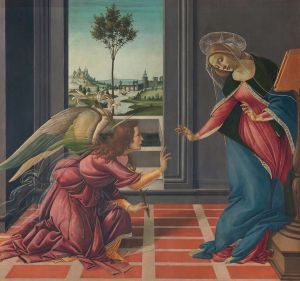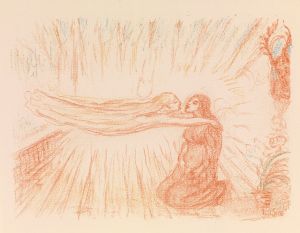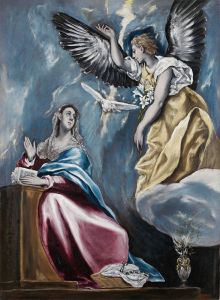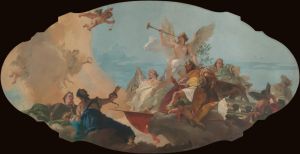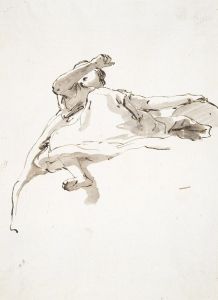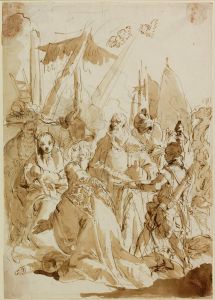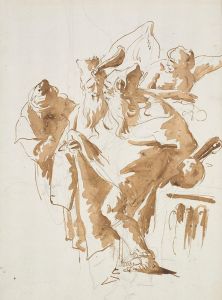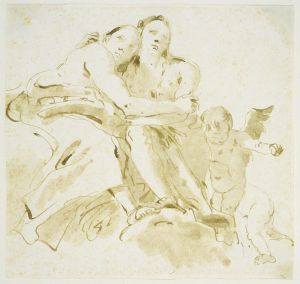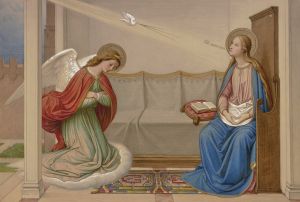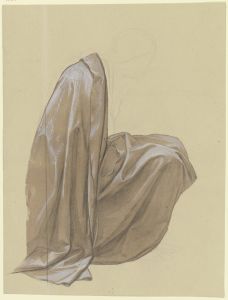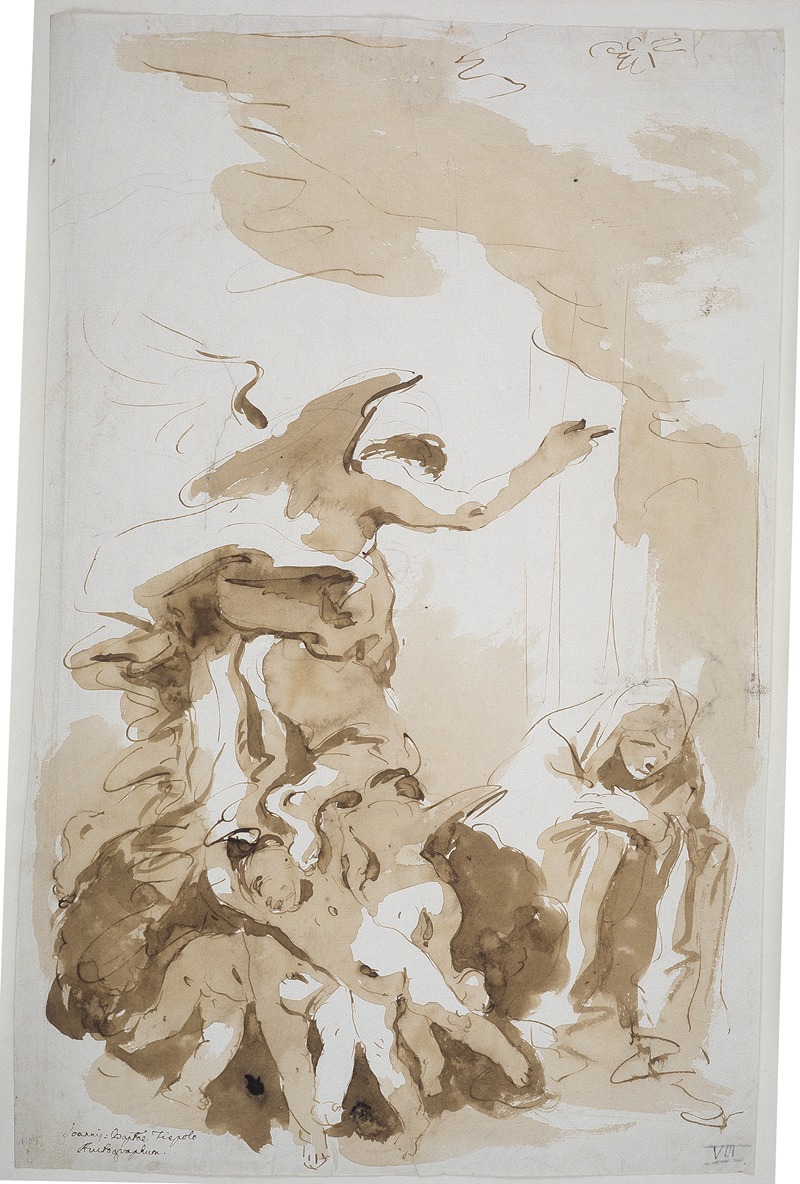
The Annunciation
A hand-painted replica of Giovanni Battista Tiepolo’s masterpiece The Annunciation, meticulously crafted by professional artists to capture the true essence of the original. Each piece is created with museum-quality canvas and rare mineral pigments, carefully painted by experienced artists with delicate brushstrokes and rich, layered colors to perfectly recreate the texture of the original artwork. Unlike machine-printed reproductions, this hand-painted version brings the painting to life, infused with the artist’s emotions and skill in every stroke. Whether for personal collection or home decoration, it instantly elevates the artistic atmosphere of any space.
Giovanni Battista Tiepolo's The Annunciation is a celebrated oil painting created by the renowned Venetian artist during the 18th century. Tiepolo, known for his mastery of the Rococo style and his ability to depict dramatic religious and mythological scenes, painted this work as part of his extensive oeuvre that often focused on biblical themes. The painting illustrates the moment described in the Gospel of Luke when the Archangel Gabriel announces to the Virgin Mary that she will conceive and become the mother of Jesus Christ.
In The Annunciation, Tiepolo employs his signature use of light, color, and dynamic composition to convey the spiritual significance of the event. The scene is characterized by a celestial atmosphere, with Gabriel depicted descending gracefully, surrounded by soft clouds and cherubs. Mary is shown in a posture of humility and acceptance, her gaze directed upward toward the angel. The interplay of light and shadow enhances the divine nature of the encounter, with a radiant glow emphasizing the figures and their connection to the divine.
Tiepolo's use of vibrant colors, such as the rich blues and reds in Mary's garments, reflects the Venetian tradition of colorism, while the delicate rendering of textures and fabrics showcases his technical skill. The painting also demonstrates his ability to create a sense of movement and drama, a hallmark of his work. The composition is carefully balanced, with the angel and Mary positioned to draw the viewer's eye toward the central interaction between the two figures.
The exact date of the painting's creation is not definitively documented, but it is believed to have been completed during Tiepolo's mature period, when he was at the height of his artistic powers. During this time, Tiepolo was highly sought after for commissions across Europe, including frescoes and altarpieces for churches and palaces. The Annunciation is thought to have been created for a religious setting, likely as an altarpiece, though the specific patron or location for which it was originally intended is not known.
Today, The Annunciation is housed in the Scuola Grande dei Carmini in Venice, Italy. It remains an important example of Tiepolo's religious works and his ability to convey profound spiritual themes through his art. The painting continues to be admired for its technical brilliance, emotional depth, and its place within the broader context of 18th-century Venetian painting.






